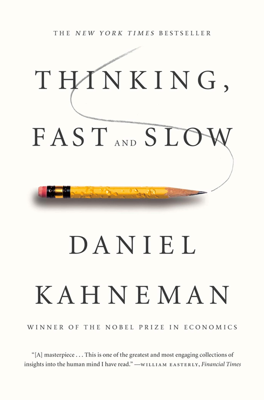The Fourfold Pattern
Fourfold Pattern of Decision Making
The chapter discusses the fourfold pattern of decision-making where people assign different weights to uncertain outcomes based on their potential gains or losses, and the probability of those outcomes occurring.
Non-Linear Weighting of Probabilities
- People do not assign linear weights to probabilities when evaluating risky prospects. Instead, they overweight small probabilities (the possibility effect) and underweight high probabilities, nearly certain ones (the certainty effect).
- Improbable outcomes are overweighted, making highly unlikely chances seem more significant than they statistically are, which is common in scenarios where people buy lottery tickets or overpay for minuscule chances to secure large gains.
- Almost certain outcomes are underweighted, which can make people willing to pay to eliminate even the smallest risk, seen often in the purchase of insurance.
The Allais Paradox
- Reflects a deviation from expected utility theory, demonstrating that people's choices in risk can sometimes be inconsistent when faced with two different but economically equivalent scenarios. Specifically, people show greater sensitivity to changes that move them towards or away from certain outcomes (0% or 100%).
Four Scenarios of the Fourfold Pattern
- High Probability Gain (Risk Aversion): People prefer a secure gain over a higher potential gain with risk involved, due to the pain of losing being more impactful than the pleasure of gaining.
- Low Probability Gain (Risk Seeking in Gains): The attractiveness of a large gain with a small probability is overweighted, leading individuals to accept risky bets like lottery tickets.
- High Probability Loss (Risk Seeking in Losses): Facing a high likelihood of a significant loss, individuals prefer taking a risk for a chance to avoid it altogether instead of accepting a smaller guaranteed loss.
- Low Probability Loss (Risk Aversion in Losses): Even a small chance of a significant loss is avoided at disproportionate costs, explaining behaviors like purchasing expensive insurance for highly unlikely events.
Application in Legal Settings
- Examines how the fourfold pattern influences settlement decisions in legal cases. Plaintiffs and defendants weigh potential gains and losses differently based on the strength of their cases, leading to risk-averse or risk-seeking behaviors.
- Risk-averse plaintiffs with strong cases tend to settle for secure payouts that are less than the expected trial outcome, while risk-seeking defendants with weak cases prefer to gamble on trial outcomes rather than accept unfavorable settlements.
The chapter concludes that while deviations from expected value in decision-making can be understood through psychological biases, consistent deviations can lead to suboptimal outcomes over time. It makes the case that understanding these patterns can help in making more rational decisions, especially in repetitive decision-making environments like legal settlements or corporate strategies.
